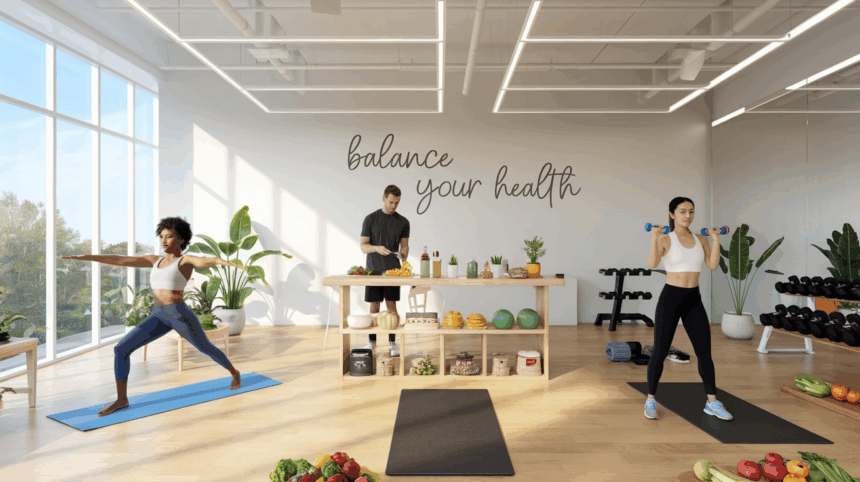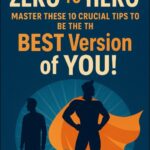Ever catch yourself in the 9pm guilt-spiral after promising yourself “today’s the day” you’d finally start working out… again?
We’ve all been there. That endless cycle of fitness motivation that burns bright Monday morning and fizzles by Wednesday afternoon.
But what if sustainable fitness isn’t about motivation at all? What if health and fitness success depends on something entirely different than what Instagram influencers are selling you?
I’ve spent 15 years helping normal people with real jobs and actual responsibilities build lasting fitness habits. Not through fancy equipment or impossible diets, but through a completely different approach.
And the secret? It has nothing to do with willpower. In fact, what I’m about to share might make you rethink everything you believe about getting in shape.
Understanding the Fundamentals of Holistic Health
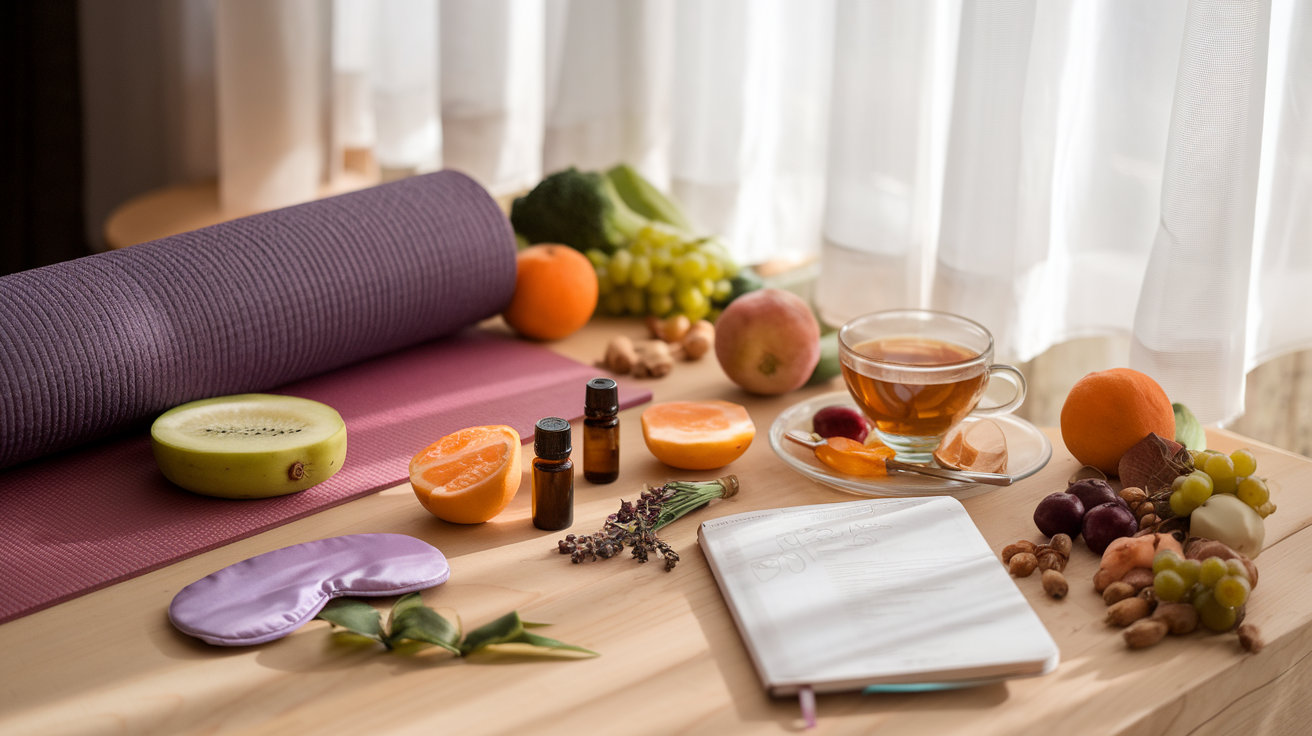
How Physical and Mental Health Connect for Overall Wellbeing
Your mind and body aren’t separate entities – they’re constantly talking to each other. When you’re stressed, your muscles tense up. When you exercise, your brain releases feel-good chemicals. It’s a two-way street that many people overlook.
Think about the last time you felt anxious. Did your heart race? Did you feel tightness in your chest? That’s your mental state directly affecting your physical body. And it works the other way too – chronic pain can trigger depression, while regular movement can boost your mood.
The mind-body connection isn’t some woo-woo concept – it’s backed by science. When you meditate, your blood pressure drops. When you laugh, your immune system gets stronger. Your thoughts literally change your biochemistry.
I’ve seen this play out countless times. People who address both their physical and mental health simply thrive more than those who focus on just one aspect. They recover faster from illness, handle stress better, and generally enjoy life more.
The Five Pillars of Health: Nutrition, Exercise, Sleep, Stress Management, and Social Connection
Nutrition isn’t just about weight – it’s brain food too. Eating whole foods rich in omega-3s, antioxidants, and fiber feeds both your body and mind. Skip the ultra-processed stuff that crashes your energy and mood.
Exercise doesn’t require a gym membership. Find movement you actually enjoy – dancing, hiking, swimming – anything that gets your heart pumping for about 150 minutes weekly. Your body was designed to move, not sit in front of screens all day.
Sleep is your body’s repair time. Those 7-9 hours aren’t optional – they’re when your brain clears toxins and your muscles recover. Skimp on sleep, and everything else suffers.
Stress management looks different for everyone. Maybe it’s meditation, maybe it’s gardening, maybe it’s playing with your dog. The key is having tools ready before you need them.
Social connection might be the most overlooked pillar. Humans are wired for community. Regular meaningful interaction isn’t a luxury – studies show it’s as important for longevity as quitting smoking.
Setting Realistic Health Goals That Stick in 2025
The problem with most health goals? They’re too big, too vague, and too disconnected from your actual life. “Get healthy” isn’t a plan – it’s a wish.
Start tiny. Instead of “exercise more,” try “walk for 10 minutes after lunch on weekdays.” Specific, doable, and has a clear trigger (finishing lunch). These micro-habits stack up faster than you’d think.
Technology in 2025 makes tracking easier than ever, but beware of data overload. Choose 1-2 metrics that actually matter to you, not what your fitness-obsessed cousin is monitoring.
Your environment shapes your habits more than willpower ever will. Make healthy choices the default by prepping vegetables at eye level in your fridge, keeping walking shoes by the door, or setting a consistent bedtime alarm.
Remember that progress isn’t linear. You’ll have great weeks and terrible ones. The people who succeed aren’t the ones who never fail – they’re the ones who get back on track without beating themselves up.
Nutrition Strategies for Optimal Performance
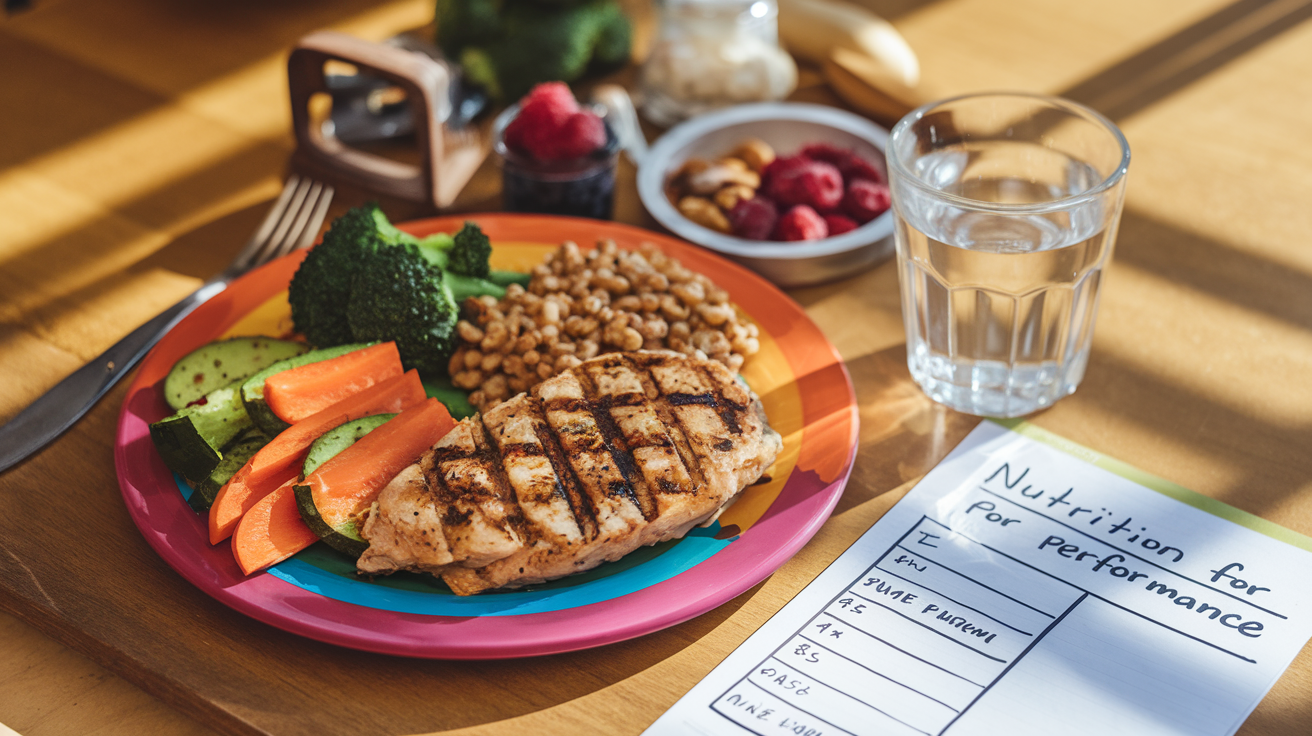
Power-Packed Meal Planning for Busy Professionals
You know the drill. You wake up rushing, grab whatever’s handy for lunch, and end up ordering takeout after a long workday. Sound familiar? Your nutrition doesn’t have to suffer just because your calendar’s packed.
The trick isn’t complicated meal prep that eats up your Sunday—it’s smart planning that actually works with your schedule.
Try batch cooking two protein sources twice a week. Grilled chicken and baked salmon on Sunday, maybe some turkey and lentils mid-week. Store them in grab-and-go containers.
Keep these powerhouse combos ready:
- Hard-boiled eggs + avocado + cherry tomatoes
- Greek yogurt + berries + nuts
- Canned tuna + pre-chopped veggies
Your secret weapon? The “3-3-3 method”:
- Three breakfast options on rotation
- Three lunch templates you can mix up
- Three 15-minute dinner recipes you can make with eyes closed
Understanding Macronutrients and Their Role in Body Composition
Macros aren’t just fitness buzzwords—they’re your body’s building blocks. And getting them right can make or break your health goals.
Proteins aren’t just for gym rats. They repair tissues, support immunity, and yes, help with that muscle definition. But here’s what most people miss: timing matters almost as much as quantity. Spreading protein throughout your day gives your body a steady supply for optimal use.
Carbs have been unfairly demonized. They’re your brain’s preferred fuel source and essential for high-intensity workouts. The difference between good and bad carbs? Processing. The less processed, the slower they release energy—keeping you going longer without crashes.
Fats don’t make you fat. They’re crucial for hormone production, brain health, and absorbing certain vitamins. Avocados, nuts, olive oil—these aren’t just trendy foods, they’re powerhouses that help everything from your skin to your heart.
Your ideal macro ratio depends on your body, goals, and lifestyle. A decent starting point for most:
- Protein: 25-30% of calories
- Carbs: 40-50% of calories
- Fats: 25-30% of calories
Superfoods and Their Evidence-Based Benefits
Forget the marketing hype. While no single food is magical, certain nutrient-dense options deliver serious bang for your buck.
Blueberries top the charts for antioxidant content. Those tiny berries fight inflammation and support brain function better than most supplements claiming to do the same.
Fatty fish like salmon contain omega-3s that have been shown in hundreds of studies to reduce heart disease risk and improve brain function. Two servings weekly can lower your inflammatory markers by up to 30%.
Fermented foods aren’t just a trend. Kimchi, sauerkraut, and kefir populate your gut with beneficial bacteria that strengthen your immune system and may even improve your mood. The gut-brain connection is real.
Leafy greens like kale and spinach are micronutrient powerhouses. Just one cup delivers more vitamin K than you need in a day, plus calcium that rivals dairy.
Dark chocolate (70%+ cocoa) improves blood flow and contains compounds that may protect your cells from damage. Just keep it to a square or two daily.
Hydration Secrets: Beyond the 8 Glasses Rule
The 8-glasses rule? It’s outdated and oversimplified. Your actual needs vary based on activity level, climate, and even what you eat.
A more accurate approach: drink enough that your urine stays pale yellow throughout the day. Too dark? Drink more. Clear as water? You might be overhydrating.
Water timing matters as much as quantity. Front-loading your hydration (16oz within 30 minutes of waking) jumpstarts your metabolism and cognition before you’ve even had breakfast.
Hydration isn’t just about water. About 20% of your daily fluid intake comes from food. Cucumber, watermelon, oranges, and soups all contribute significantly.
Performance drops with even minor dehydration. Just 2% fluid loss can reduce your cognitive function by up to 13% and your physical performance by nearly 10%.
Electrolytes matter, especially if you’re active. For most people, food provides enough, but if you’re sweating heavily for over an hour, consider adding a pinch of salt and squeeze of lemon to your water bottle.
Mindful Eating Practices for Better Digestion and Satisfaction
Your body knows how much it needs. The problem? We’ve stopped listening.
Mindful eating isn’t some woo-woo practice—it’s returning to how humans ate before smartphones and desktop lunches. And it works. Studies show people who eat mindfully consume fewer calories while feeling more satisfied.
The 20-minute rule changes everything. It takes about that long for your brain to register fullness. Eating slowly lets you stop when satisfied, not stuffed.
Try this at your next meal: Put your fork down between bites. Notice flavors, textures, and how your hunger gradually shifts. You’ll likely eat less while enjoying it more.
Chewing thoroughly isn’t just for proper digestion—it’s the first step in mindful eating. Aim for 20-30 chews per bite. Sounds excessive until you realize most of us average just 5-7.
Your environment matters too. Eating in front of screens increases consumption by up to 25%. Create an eating-only zone, even if it’s just your kitchen table with your phone turned over.
Start with just one mindful meal per day. Breakfast often works best since mornings tend to be less rushed. As this becomes habit, you’ll naturally extend the practice to other meals.
Exercise Approaches for Every Body and Lifestyle
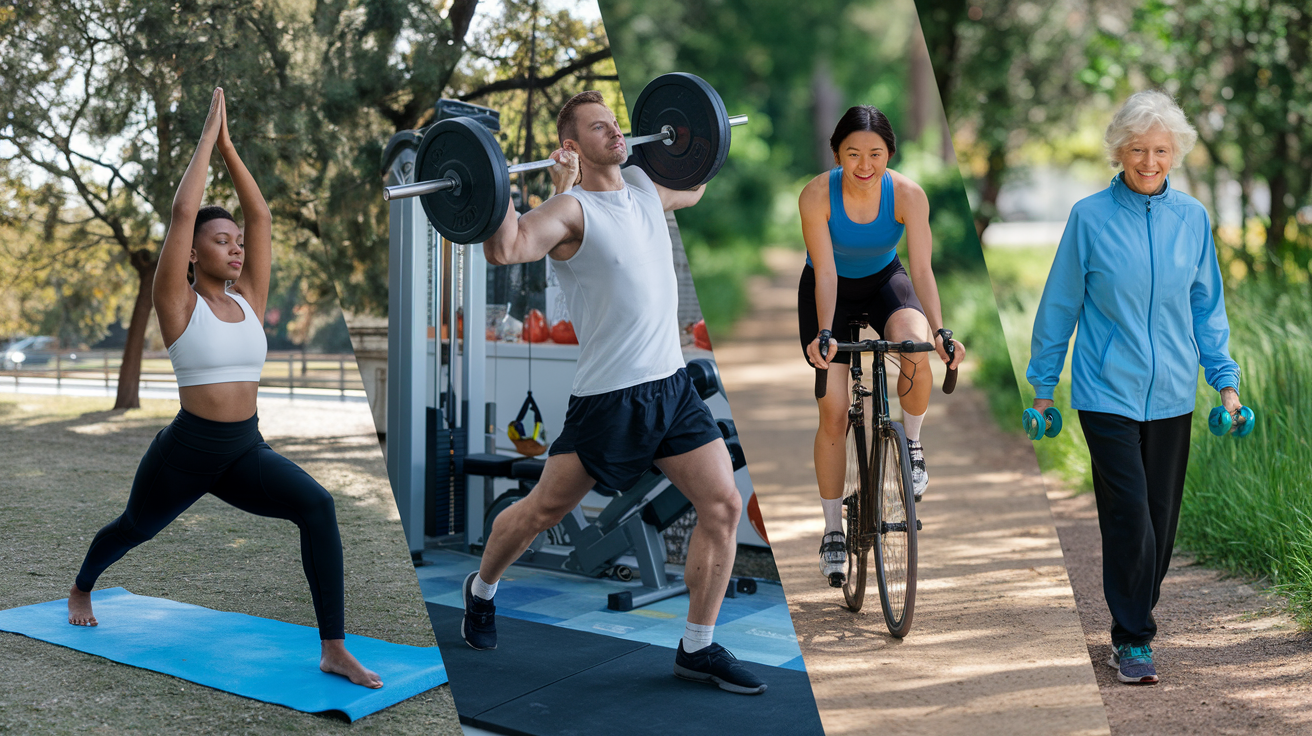
Finding Your Fitness Personality: Matching Workouts to Your Preferences
Ever notice how some people jump out of bed for a 5 AM run while others would rather do anything else? That’s your fitness personality at work.
Think of exercise like dating – not every workout is going to be “the one.” Maybe you tried CrossFit because your coworker loves it, but you hated every second. That doesn’t mean exercise isn’t for you – it means CrossFit isn’t your match.
Are you competitive? Team sports or group fitness classes might light your fire. More introverted? Solo activities like swimming or hiking could be perfect. If you’re always busy, short, intense workouts might fit your schedule better than 90-minute yoga sessions.
Try this quick quiz:
- Do you prefer mornings or evenings?
- Would you rather exercise alone or with others?
- Do you enjoy structure or spontaneity?
- Are you motivated by goals or by how you feel?
Your answers can guide you toward workouts that stick. Because the best exercise isn’t necessarily the trendiest or most intense – it’s the one you’ll actually do consistently.
Strength Training Fundamentals for Longevity and Functionality
Strength training isn’t just for bodybuilders – it’s your ticket to aging well.
After 30, we naturally lose muscle mass year by year. But regular strength training fights back, helping you maintain independence as you age. When you’re 80, you’ll thank yourself for every squat you did today.
The basics are simpler than you might think:
-
Compound movements work multiple muscle groups at once, giving you more bang for your buck. Think squats, deadlifts, push-ups, and rows.
-
Progressive overload means gradually increasing weight or reps. Your body adapts to challenges, so you need to keep raising the bar (sometimes literally).
-
Proper form trumps heavy weights every time. One perfect squat beats ten sloppy ones.
For beginners, bodyweight exercises are perfect. Can’t do a full push-up? Start on your knees. Can’t squat deeply? Use a chair for support.
Two to three strength sessions weekly is enough to see real changes. And no, women won’t “bulk up” – that takes specialized training and nutrition that most people don’t accidentally stumble into.
Cardio Training: High-Intensity vs. Steady-State Benefits
The cardio debate rages on: should you go hard and fast or slow and steady?
The truth? Both approaches work – they just do different things.
High-Intensity Interval Training (HIIT) alternates between pushing your limits and active recovery. A simple example: sprint for 30 seconds, walk for 90 seconds, repeat. These workouts are time-efficient (often under 30 minutes) and fantastic for cardiovascular health and fat loss.
Steady-State Cardio means maintaining a consistent, moderate effort – like a 30-minute jog where you could still hold a conversation. These longer sessions build endurance and recovery capacity, and they’re generally easier on your joints.
Here’s a quick comparison:
| HIIT | Steady-State |
|---|---|
| Shorter time commitment | Better for beginners |
| Higher calorie burn post-workout | Lower injury risk |
| More intense/challenging | Better for stress relief |
| Great for breaking plateaus | Easier to recover from |
Most fitness experts now recommend including both types in your routine. Maybe a couple HIIT sessions and one longer steady-state workout weekly. Your heart (and schedule) will thank you.
Flexibility and Mobility: The Often Neglected Components of Fitness
We all know that person who can bench press impressive weight but can’t touch their toes. Don’t be that person.
Flexibility (your muscles’ ability to lengthen) and mobility (your joints’ range of motion) matter just as much as strength and cardio – especially as you age.
Poor mobility doesn’t just limit your workout performance; it affects everyday life. Try tying your shoes with stiff hips or reaching a high shelf with tight shoulders. Not fun.
The good news? You don’t need complicated routines. Try these approaches:
-
Dynamic stretching before workouts – think arm circles, leg swings, and gentle rotations.
-
Static stretching after workouts – hold positions for 20-30 seconds when your muscles are warm.
-
Daily mobility work – even 5-10 minutes targeting your trouble spots makes a difference.
-
Yoga or Pilates – these practices combine strength and flexibility beautifully.
The best part about mobility work? It feels good immediately. While strength gains take weeks to notice, that satisfying stretch sensation is instant feedback. Your body is literally thanking you.
Make this the fitness component you never skip. Future you will move better, hurt less, and stay active longer.
Recovery: The Missing Link in Most Fitness Programs
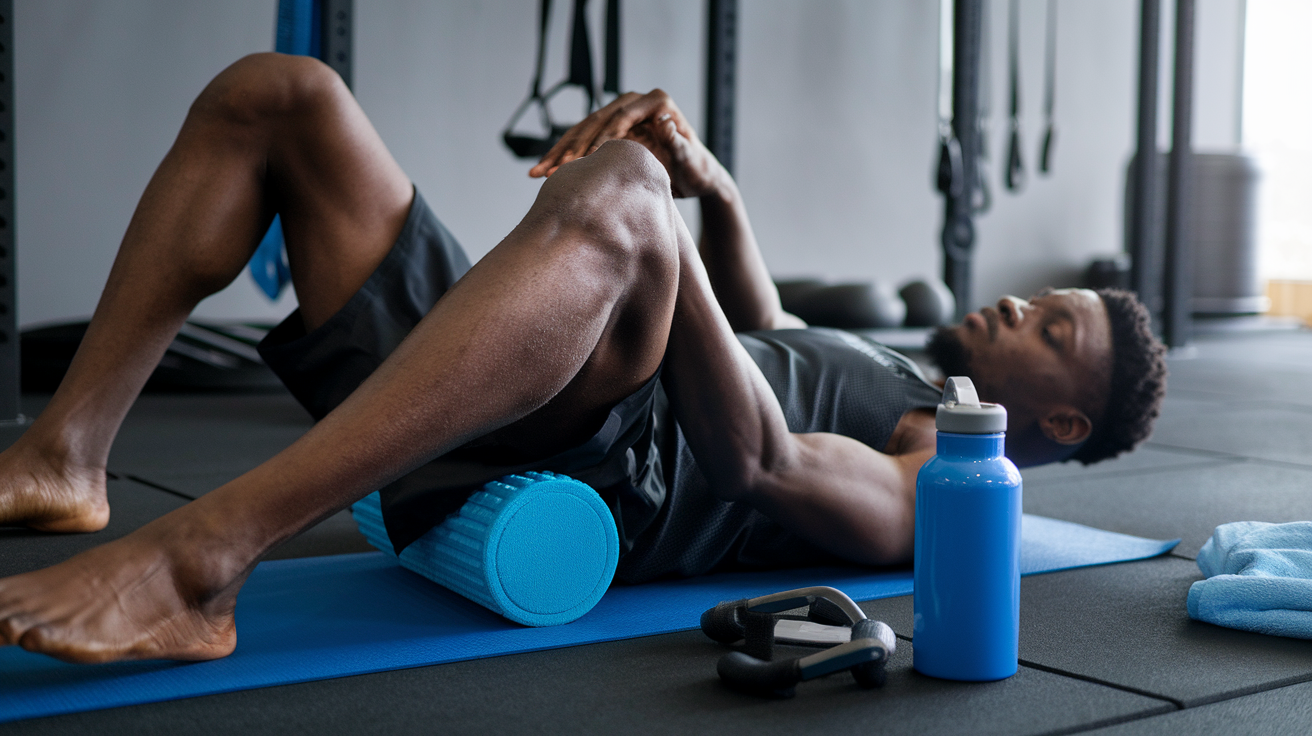
A. Sleep Optimization Techniques for Enhanced Muscle Repair
You’ve probably heard it a million times – sleep matters. But here’s what most trainers won’t tell you: sleep isn’t just important for your fitness goals—it’s absolutely critical.
When you’re snoozing, your body releases growth hormone that repairs all those micro-tears in your muscles from your last workout. Skip on sleep, and you’re basically throwing away hard-earned gains.
Want to level up your sleep game? Try these techniques:
- Keep your bedroom between 60-67°F (15-19°C) – cooler temperatures trigger melatonin production
- Ditch screens 60 minutes before bedtime (yes, that includes scrolling through Instagram)
- Create a consistent sleep/wake schedule – even on weekends
- Invest in blackout curtains and white noise machines if needed
One client of mine struggled with recovery until we fixed her sleep. She went from plateauing for months to adding 20 pounds to her deadlift in just three weeks after prioritizing 8 hours of quality sleep.
B. Active Recovery Methods That Accelerate Results
Gone are the days when “rest” meant sitting on the couch all day. Active recovery is where it’s at.
Active recovery increases blood flow to damaged muscles without adding stress. This flushes out metabolic waste and delivers nutrients exactly where they’re needed.
Some game-changing active recovery methods:
- Low-intensity swimming (my personal favorite)
- Yoga or gentle stretching
- Walking in nature (bonus points for barefoot on grass)
- Light cycling with zero resistance
The magic happens at about 30-40% of your max effort. You should barely break a sweat.
I’ve seen clients transform their results by adding just two 20-minute active recovery sessions per week. One guy dropped his mile time by 45 seconds simply by adding recovery swimming on his “off” days.
C. Stress Reduction Practices That Protect Your Fitness Gains
Cortisol is the arch-nemesis of your fitness goals. This stress hormone breaks down muscle tissue and encourages fat storage – especially around the midsection. Not exactly what we’re aiming for, right?
Your body can’t tell the difference between work stress and physical stress from exercise. Both tap into the same stress response system.
Try these stress-busting techniques to safeguard your gains:
- Box breathing: 4 counts in, 4 counts hold, 4 counts out, 4 counts hold
- Forest bathing (shinrin-yoku): spend time among trees without distractions
- Cold exposure: 2-3 minute cold showers post-workout
- Meditation: even 5 minutes daily makes a difference
Many athletes track their HRV (heart rate variability) to monitor stress levels. When HRV drops, it’s a sign to prioritize recovery before your performance takes a hit.
D. When and How to Take Strategic Rest Days
Strategic rest isn’t laziness—it’s smart training.
Your body adapts and grows stronger during recovery, not during the workout itself. Without proper rest days, you’re just digging yourself deeper into a recovery deficit.
Signs you need a rest day:
- Persistent soreness beyond 72 hours
- Decreased performance on routine exercises
- Elevated resting heart rate in the morning
- Poor sleep quality
- Irritability or mood swings
Plan rest days strategically, not randomly. For most people, scheduling one full rest day after 2-3 days of training works well. Elite athletes might prefer an entire deload week every 4-6 weeks.
On rest days, prioritize sleep, hydration, and nutrition. Your body needs raw materials to rebuild.
Remember this: the athlete who recovers best performs best. Period.
Creating Sustainable Health Habits

Behavior Change Science: Making Health Routines Automatic
Look, changing your habits isn’t about willpower. It’s about systems. The science shows that our brains are wired to conserve energy, which means we default to whatever’s easiest.
Want to make exercise stick? Stop relying on motivation. Instead, attach your new habit to something you already do daily. Brushing teeth → 10 squats. Coffee brewing → 2-minute stretch routine. This “habit stacking” bypasses the motivation problem completely.
The environment around you shapes behavior more than intentions do. Keep those running shoes by the door. Prep those veggie containers on Sunday. Delete the food delivery apps that tempt you at 10pm.
Start ridiculously small. We’re talking “do one push-up” small. The consistency matters more than intensity at first. Once the behavior is automatic, then scale up.
Reward yourself immediately after the habit. The brain learns through this positive reinforcement loop. A small celebration (even just saying “I crushed it!”) creates dopamine that helps cement the habit.
Digital Tools and Apps That Actually Improve Health Outcomes
Not all health apps are created equal. The ones that actually work share some key features.
The most effective apps use behavioral psychology, not just tracking. Look for these specific elements:
| Feature | Why It Works |
|---|---|
| Social accountability | Peer support increases adherence by 65% |
| Habit triggers | Reminders linked to daily routines |
| Progress visualization | Visual feedback activates reward centers |
| Personalized challenges | Adapts to your actual capabilities |
| Game mechanics | Taps into our natural drive for achievement |
Apps like Noom focus on the psychology behind eating, not just calorie counting. Strava leverages social connection to keep you moving. Sleep Cycle analyzes patterns to help you optimize rest.
The trick is finding tools that fit seamlessly into your life. The best app is the one you’ll actually use consistently.
Don’t fall for flashy marketing. Check if the app is backed by actual research or just slick design. The most effective digital tools focus on changing behaviors, not just tracking numbers.
Building Your Support System for Long-Term Success
The myth of the lone health warrior needs to die. Nobody transforms their health in isolation.
Your social circle influences your health behaviors more than you think. Studies show you’re 57% more likely to become obese if a friend does. But the reverse is also true—surrounding yourself with active people makes you more active.
Finding your tribe doesn’t mean everyone has to share identical goals. You need different types of support:
- Accountability partners who check in on specific commitments
- Mentors who’ve walked the path before you
- Cheerleaders who celebrate your wins
- Technical experts (trainers, nutritionists) for specialized guidance
Don’t underestimate online communities. Virtual support groups have shown remarkable success rates, especially for people with geographical or mobility limitations.
The most powerful move? Making your intentions public. Tell people what you’re doing. The social commitment effect dramatically increases follow-through.
Overcoming Common Obstacles and Fitness Plateaus
Plateaus aren’t failures—they’re feedback. Your body has simply adapted to what you’ve been doing.
When progress stalls, most people make the mistake of working harder at the same thing. Instead, introduce novelty. Switch from steady cardio to intervals. Trade barbell work for bodyweight movements. The body responds to new stimuli, not just increased effort.
Time constraints kill most health plans. The solution isn’t finding more time—it’s redesigning your approach. High-intensity workouts can deliver results in 20 minutes. Meal prep can be simplified to 30-minute sessions twice weekly.
Energy management trumps time management. Structure your health activities when your energy naturally peaks. For most, that’s not 5AM or 9PM.
Psychological obstacles are often the most stubborn. That voice saying “I’ll always fail” or “I’m not an athletic person” needs to be challenged with evidence. Document small wins religiously. Each one builds the case against that negative identity.
Tracking Progress Beyond the Scale: Better Metrics for Health
The scale is probably the worst way to measure health progress. It fluctuates based on hydration, hormones, muscle gain, and dozens of other factors unrelated to actual health improvements.
More meaningful metrics to track:
| Metric | Why It Matters |
|---|---|
| Resting heart rate | Improves with cardiovascular fitness |
| Sleep quality | Foundational to all health outcomes |
| Energy levels | Direct indicator of metabolic health |
| Mood stability | Reflects hormonal balance and stress management |
| Functional strength | Can you carry groceries more easily? |
| Recovery time | How quickly you bounce back from exertion |
Photos tell a more honest story than numbers. Take them in the same lighting, same pose, every 4-6 weeks. The visual comparison reveals changes that scales miss.
Blood work provides the most objective health markers. Cholesterol ratios, inflammatory markers, and blood sugar control show what’s happening beneath the surface.
Remember that some of the most important improvements aren’t measurable at all. How does movement feel in your body now? Do you enjoy healthier foods rather than just tolerating them? These qualitative shifts often precede the quantitative ones.
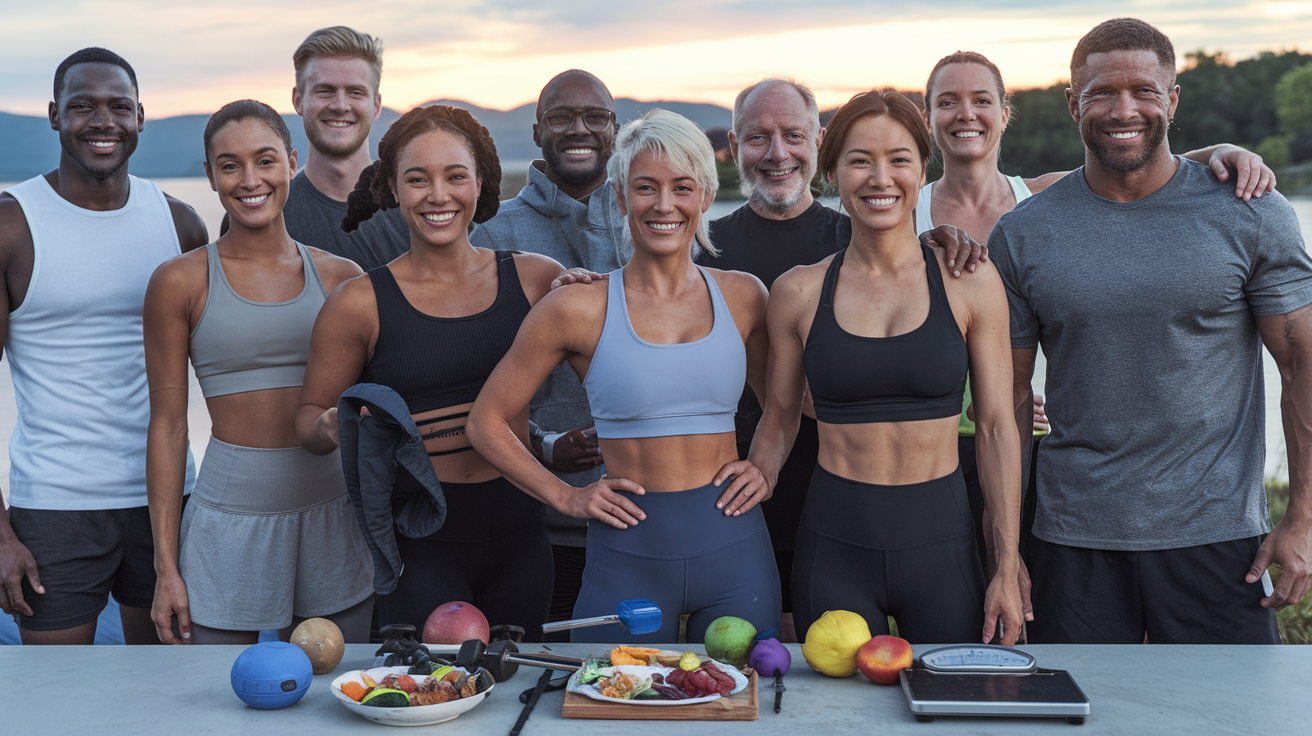
Embracing the Journey to Wellness
The path to better health involves more than sporadic workouts or temporary diet changes. It requires understanding holistic health principles that address both body and mind, customizing nutrition to fuel your unique needs, and finding exercise approaches that work for your specific body and lifestyle. Don’t overlook the critical importance of recovery in your fitness regimen—it’s often the missing element that prevents many from achieving their goals. By focusing on creating sustainable habits rather than quick fixes, you set yourself up for long-term success.
Your wellness journey is personal and continual. Start by implementing small, consistent changes that align with the holistic principles we’ve discussed. Whether it’s improving your nutrition, finding physical activities you genuinely enjoy, prioritizing recovery, or establishing healthier daily routines—each step moves you forward. Remember that true fitness isn’t about perfection but progress. Your body deserves care that lasts a lifetime, not just until the next beach vacation or special event. What small, sustainable change will you commit to today?


